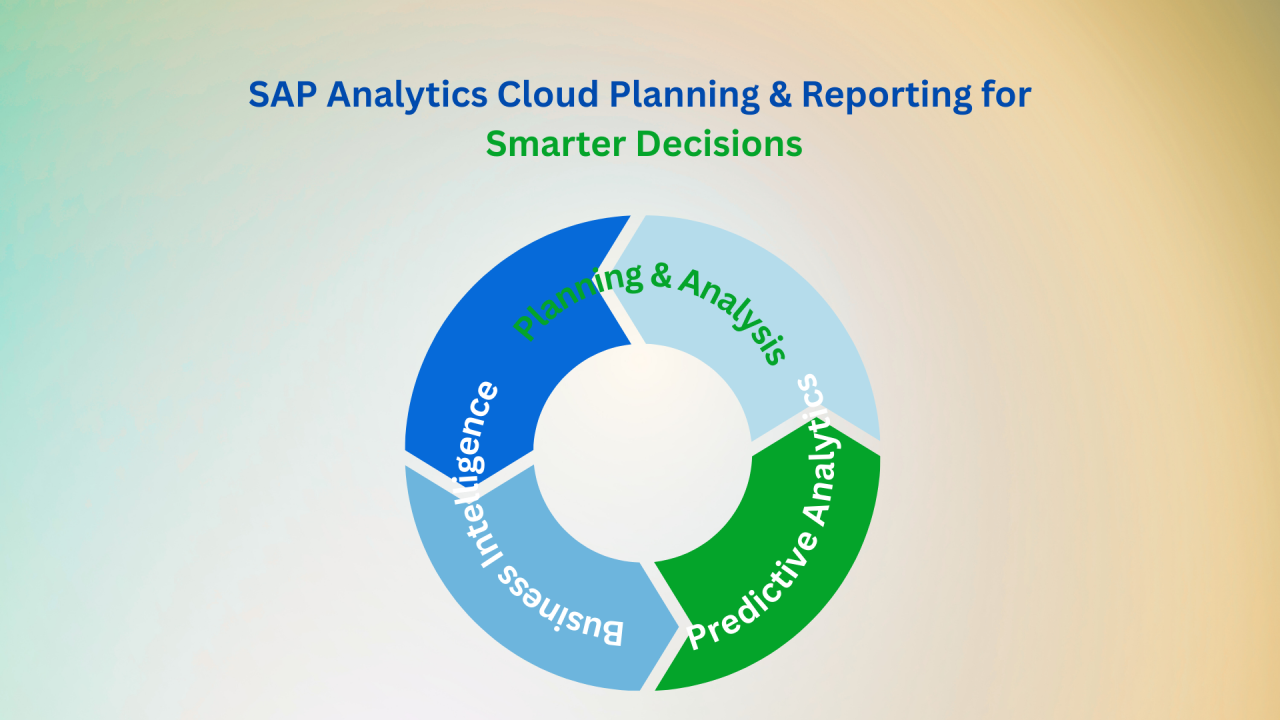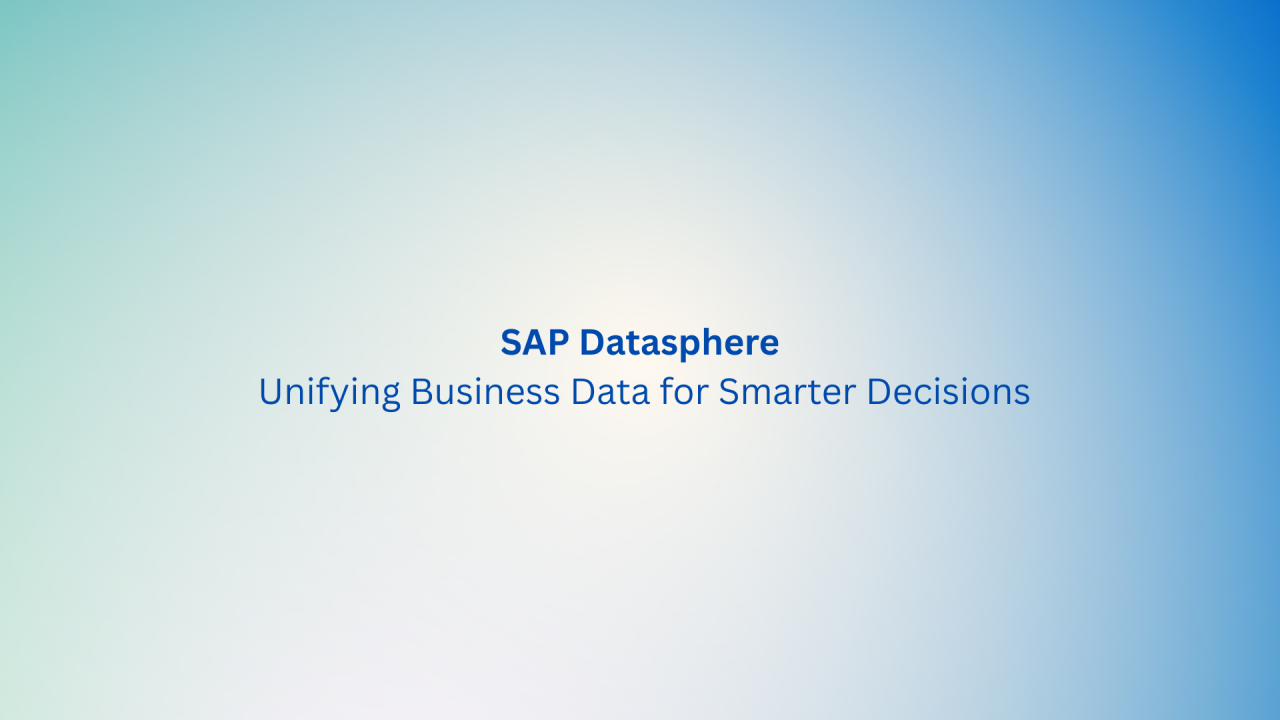Introduction
In the era of data, the success of businesses hinges on data management and analysis. However, coping with this wealth and diversity of data is not always easy. This is where SAP Data Sphere comes into play. SAP Data Sphere is an innovative platform that guides businesses on their journey into the data universe. This platform provides a comprehensive solution for data integration, analysis, and management, enabling businesses to leverage their data resources effectively and gain a competitive advantage.
In this newsletter, we aim to take you on a journey to explore the opportunities and value offered by SAP Data Sphere. We will delve into how this platform can benefit your business and optimize your data management processes.
What is SAP Data Sphere?
SAP DataSphere is a robust data service integrated into the Business Technology Platform (BTP), designed to empower data professionals with seamless and scalable access to crucial business data. It represents the evolution of SAP Data Warehouse Cloud, introducing enhanced features for data discovery, modeling, and distribution, making it a comprehensive solution for managing mission-critical data effectively.
- Unified experience for data integration
- Data cataloging
- Semantic modeling
- Data warehousing
- Data federation
- Data virtualization
- Distribution of authoritative business data
- Preservation of business context and logic across the data landscape
Features and Benefits of SAP Datasphere
SAP Datasphere makes it a breeze for data experts to distribute vital company information across the board while keeping all the important context and logic intact. It’s a game-changer, simplifying data management and giving organizations the edge they need to thrive in a competitive market. Let’s dive into its features of it.

- Secure Data Environment: Provides a secure environment supporting diverse data application needs, including real-time analytics, governed data access, a data catalog, and data science (machine learning).
- Centralized Spaces: Spaces are created and provisioned centrally to offer secure modeling environments for different departments or use cases.
- Wide Range of Connections: Offers connections to both SAP and non-SAP cloud and on-premise sources, including data lakes, ensuring comprehensive data access.
- Graphical Low-Code/No-Code Tools: Provides intuitive graphical tools to support self-service modeling needs for business users, promoting ease of use and efficiency.
- Powerful Data Transformation Tools: Offers built-in SQL and data flow editors for sophisticated modeling and data transformation needs, complemented by support for third-party tools and other SAP Integrated Development Environments (IDEs).
- Embedded Data Marketplace: Includes an embedded data marketplace to consume external data products and create internal data products, enhancing data accessibility and collaboration.
- Data Matching Environment: Features a business user-friendly data matching environment to enrich existing datasets with external data from various sources.
- Catalog and Discovery: Offers a catalog for self-service discovery of data and analytic assets, glossaries, terms, and key performance indicators, facilitating efficient data exploration and utilization.
- Multi-Dimensional Modeling: Supports multi-dimensional modeling with powerful analytical capabilities and built-in data preview, enabling comprehensive data analysis.
- Impact and Lineage Analysis: Provides graphical impact and lineage analysis to visualize data movements, transformations, and dependencies, ensuring transparency and traceability in data processes.
- Collaboration and Sharing: Enables cross-space collaboration and sharing of centrally governed sources, with support for row-level security, fostering collaboration while maintaining data governance standards.
- Reuse and Migration: Facilitates the reuse and migration of trusted and governed metadata and data models from on-premise SAP Business Warehouse and SAP SQL Data Warehouse implementations, ensuring consistency and efficiency in data management.
- Business Content Provision: Offers SAP and partner business content to support end-to-end business scenarios across various industries and lines of business, enhancing solution readiness and usability.
- Integration Capabilities: Seamlessly integrates with SAP Analytics Cloud, Microsoft Excel, and public OData APIs, supporting consumption by other clients, tools, and applications, ensuring interoperability and accessibility across the ecosystem.
The SAP Datasphere Navigation

Catalog
The SAP DataSphere catalog acts as a central location for discovering, enhancing, categorizing, and sharing reliable data and analytical resources sourced from across the enterprise. Managing the extensive data generated and utilized within a company presents a significant challenge, necessitating more than just access but also the ability to extract its value to further organizational goals. A critical aspect of an effective data strategy involves establishing a unified data source while enabling employees to independently utilize it for their needs.
Data Marketplace
The Data Marketplace, fully integrated into SAP DataSphere, allows businesses to seamlessly integrate third-party data by searching and purchasing analytical data products. These data products, offered for free or through licensed purchase, are packaged as objects and can be utilized across one or multiple spaces within the SAP DataSphere tenant, with options for both one-time shipments and regularly updated offerings from data providers.
Semantic Onboarding
The Semantic Onboarding app serves as a centralized platform for importing semantically-rich objects from various sources, including SAP systems, the Content Network, the Public Data Marketplace, and other marketplace contexts, streamlining the process of accessing valuable data assets.
Business Builder
Users assigned the DW Modeler role have the ability to utilize the Business Builder editors to merge, refine, and enhance Data Builder objects. This process results in the creation of streamlined and focused perspectives suitable for consumption by SAP Analytics Cloud and MS Excel.
Data Builder
Users possessing the DW Modeler role can directly import data into the Data Builder from various connections and sources. They can then utilize flows to replicate, extract, transform, and load data, facilitating seamless data management processes within the platform.
Conclusion
SAP DataSphere offers a wide range of features and deployment choices that directly enhance business outcomes, from self-service options to hybrid data modeling and real-time reporting. Enhanced self-service capabilities empower business users to independently access and analyze necessary data, reducing reliance on IT and speeding up decision-making processes, thereby enhancing overall business performance.
In our upcoming newsletters, we’ll delve deeper into the specifics of SAP DataSphere’s functionalities and deployment options. Stay tuned for detailed discussions and practical examples that will empower you to leverage SAP DataSphere effectively for your organization’s success.





